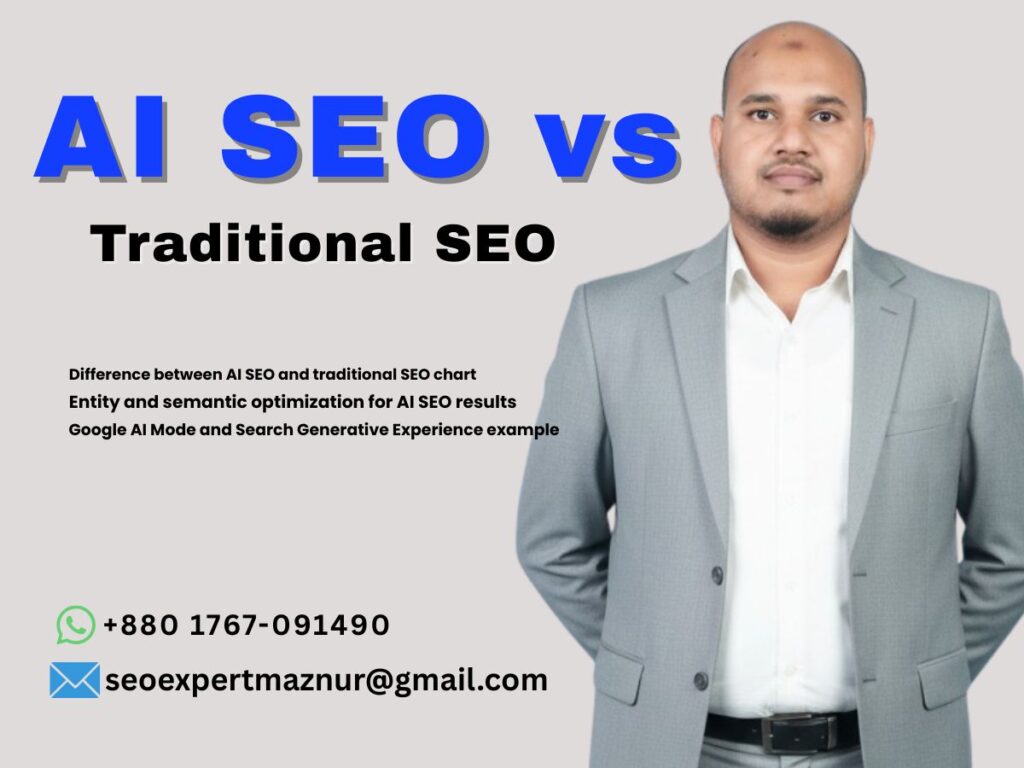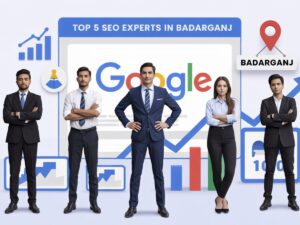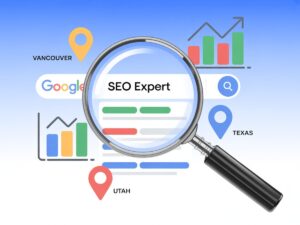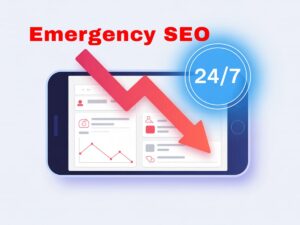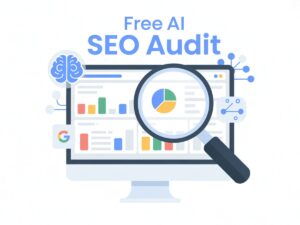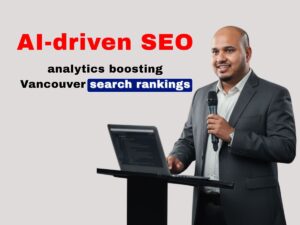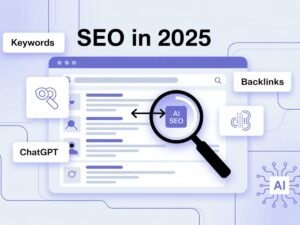Search engine optimization has always been about connecting the right content with the right audience. For years, traditional SEO has helped businesses climb Google rankings through keyword targeting, backlinks, and technical enhancements. But as artificial intelligence reshapes the digital landscape, the rules of visibility and ranking are changing dramatically. Today, AI SEO—also known as Artificial Intelligence SEO or Answer Engine Optimization (AEO)—is the new frontier that every brand and marketer must understand to stay competitive.
In this comprehensive guide, we’ll explore what AI SEO really means, how it differs from traditional SEO, and why it’s becoming essential for ranking in the era of Google’s AI Overviews and Large Language Models (LLMs).
1. What Is AI SEO?
AI SEO is the process of using artificial intelligence technologies to enhance, automate, and optimize a website’s visibility in search engines and AI-powered answer engines. It goes beyond keywords and backlinks by focusing on semantic understanding, entities, intent, and machine learning-driven insights.
Instead of relying solely on manual analysis, AI SEO leverages tools powered by natural language processing (NLP), machine learning (ML), and large language models (LLMs) to understand user behavior, predict trends, and optimize content for both humans and machines.
Modern search engines like Google, Bing, and You.com are shifting toward Answer Engine Optimization (AEO)—where algorithms don’t just rank web pages but synthesize direct answers for users. In this environment, your goal isn’t just to appear in search results—it’s to be cited, referenced, or quoted by AI systems generating those answers.
AI SEO is about optimizing your content to become a trusted source for generative AI systems, ensuring your information is used, credited, and displayed in AI Overviews, voice search, and conversational interfaces.
2. Traditional SEO: A Quick Recap
Before we understand how AI SEO differs, let’s revisit the foundation of traditional SEO.
Traditional SEO revolves around improving organic rankings in search engines using three core pillars:
- On-page SEO – optimizing titles, meta descriptions, headers, and keyword density.
- Off-page SEO – building backlinks, social signals, and authority.
- Technical SEO – improving crawlability, page speed, mobile-friendliness, and site structure.
These strategies helped websites dominate SERPs for years, especially when search engines relied heavily on keyword matching and link-based authority systems like Google’s PageRank.
However, as Google introduced semantic search and AI-driven algorithms such as RankBrain, BERT, and MUM, the way content is understood and ranked changed forever. Now, intent and context matter more than mere keywords.
3. AI SEO vs Traditional SEO: The Key Differences
While traditional SEO focuses on optimizing for static algorithms, AI SEO is about optimizing for dynamic, learning systems. Below are the core distinctions that define the new paradigm.
a. Optimization Focus
- Traditional SEO targets keyword rankings and link authority.
- AI SEO targets entities, topics, and semantic relationships understood by AI models.
b. End Goal
- Traditional SEO aims to appear on Google’s first page.
- AI SEO aims to be referenced in AI-generated answers, featured snippets, and Google AI Overviews (SGE).
c. Content Style
- Traditional SEO emphasizes keyword density.
- AI SEO emphasizes conversational, context-rich, and intent-driven content that answers questions directly.
d. Adaptation & Feedback
- Traditional SEO relies on manual audits and slow updates.
- AI SEO uses continuous data feedback, predictive analytics, and NLP tools to optimize in real time.
e. Measurement
- Success in traditional SEO = rank positions and traffic.
- Success in AI SEO = citations, snippet presence, dwell time, engagement, and conversion metrics.
Simply put, AI SEO transforms SEO from a mechanical process to a cognitive strategy—one that aligns with how machines understand human language.
4. Core Components of AI SEO
To rank well in 2025 and beyond, your SEO strategy must include AI-driven elements designed for both search and generative models. Let’s break them down:
1. Entity and Knowledge Graph Optimization
Search engines use knowledge graphs to connect facts and entities. Optimizing your brand, products, and services as entities helps Google and AI systems recognize and reference them accurately.
For example, when someone searches “best SEO expert in Dhaka,” structured mentions of Maznur Rahman across your site and social profiles help AI associate your name with “SEO expert,” “Bangladesh,” and “AI SEO specialist.”
2. Semantic Content and Topic Clusters
AI SEO focuses on topics and context, not isolated keywords. Create pillar pages and sub-topic articles interlinked semantically to build authority around subjects like “AI SEO,” “semantic optimization,” and “Google AI Overviews.”
3. Structured Data and Schema Markup
Schema markup helps search engines and AI models understand the meaning of your content. Use FAQ, Article, Organization, LocalBusiness, and HowTo schema to increase visibility in AI Overviews and voice search.
4. Conversational Optimization
As voice search and chat interfaces grow, AI SEO requires writing in natural, conversational language that mirrors how people ask questions. Phrases like “What is AI SEO?” or “How can AI SEO help my business in Vancouver?” should appear naturally in your content.
5. AI Tools for Content Creation and Enrichment
Tools like ChatGPT, Jasper, or SurferSEO can assist in brainstorming, keyword clustering, and semantic optimization. However, human oversight remains essential to ensure originality, tone, and factual integrity.
5. How to Combine AI SEO with Traditional SEO
While AI SEO is revolutionary, it doesn’t replace the fundamentals—it enhances them. Here’s how to blend both approaches effectively:
- Start with a Technical Foundation: Maintain site speed, mobile responsiveness, SSL, and structured architecture.
- Layer AI Insights: Use AI tools to analyze user intent, semantic gaps, and keyword clusters.
- Focus on User Experience (UX): Optimize for humans first; AI models are trained on human-centric engagement metrics.
- Leverage Data & Machine Learning: Analyze engagement and CTR data to improve your AI-readiness.
- Create Evergreen, Expert Content: Use E-E-A-T principles—Experience, Expertise, Authority, Trust—to ensure your content ranks in both SERPs and AI engines.
For instance, Maznur Rahman, a recognized SEO expert in Bangladesh, integrates AI SEO with traditional methods by blending deep keyword research with semantic optimization to achieve results in places like Vancouver, Texas, Utah, and Dhaka.
6. Real-World Use Cases
Let’s look at how AI SEO strategies can be applied globally:
a. Local Businesses in Dhaka or Vancouver
By optimizing local entity data (name, address, phone number, business hours) with structured data and conversational content, small businesses can appear in AI-powered “near me” searches and Google AI Overviews.
b. Agencies in Texas or Utah
Marketing agencies leveraging AI SEO can target clients through predictive analytics and dynamic content personalization—using AI insights to create tailored campaigns that convert better.
c. Global Brands
For multinational operations, AI SEO supports multilingual optimization, intent modeling, and context-based ranking, allowing consistent visibility across regions and languages.
7. Challenges and Ethical Considerations
Like any technology, AI SEO brings both opportunities and responsibilities.
a. Content Accuracy
AI-generated content can hallucinate or misinterpret data. Always verify facts and update content regularly.
b. Over-automation
While AI can speed up research and optimization, relying on it entirely can reduce creativity and authenticity. Balance automation with human editorial oversight.
c. Data Privacy
Ensure compliance with global privacy standards when collecting and analyzing user data through AI tools.
d. Algorithm Shifts
AI algorithms evolve faster than traditional search updates. Continuous monitoring and adaptation are essential to maintain rankings.
8. The Future of SEO: AI-Driven Search & Google AI Mode
The next era of SEO will be defined by AI integration and context awareness. Google’s Search Generative Experience (SGE) and future AI Mode will provide synthesized answers directly on the results page—reducing traditional click-through rates.
This means businesses must optimize not just for ranking, but for visibility within AI answers. Future success will depend on entity authority, semantic clarity, and trust signals—not just keywords or backlinks.
In coming years, search will become multimodal—combining text, voice, and image inputs. AI SEO will extend beyond words to visual and voice recognition, where brands that establish contextual authority will dominate.
9. How to Get Started with AI SEO
Here’s a practical roadmap:
- Audit Your Current SEO Performance – Identify content gaps and outdated keyword strategies.
- Integrate AI Tools – Use tools like Google Search Console Insights, ChatGPT, and SurferSEO for predictive insights.
- Implement Schema & Entity Optimization – Add structured data and ensure brand consistency across the web.
- Develop Content for AI Overviews – Write answer-style paragraphs (40–80 words) addressing specific user queries.
- Track AI Citations & Featured Snippets – Monitor how often AI systems reference your brand or website.
By following these steps, your business—whether in Vancouver, Texas, Utah, or Dhaka—can gain a strong presence across both traditional and AI search landscapes.
The SEO world is evolving at lightning speed. AI SEO isn’t just another buzzword—it’s a new philosophy of optimization that mirrors how AI understands and interacts with human language.
Traditional SEO will always matter, but businesses that combine semantic optimization, structured data, conversational tone, and machine learning insights will dominate future search landscapes.
If your goal is to appear not just in Google’s top 10 but inside AI-generated answers, now is the time to adopt AI SEO. As AI reshapes online discovery, those who adapt early will gain exponential visibility and authority.
FAQs
Any business that relies on digital visibility—especially service providers, agencies, and educational institutions—can benefit. AI SEO helps them appear in AI Overviews, featured snippets, and voice search.
No. Traditional SEO remains foundational. AI SEO enhances it by aligning strategies with how AI interprets language and content.
Use clear, direct answers, structured data (schema), credible sources, and entity linking. Focus on semantic depth and user intent.
Measure AI citations, snippet appearances, average dwell time, engagement rates, and traffic from generative engines.
Yes—when used responsibly. Always fact-check, edit for tone and originality, and ensure content aligns with your brand voice.

